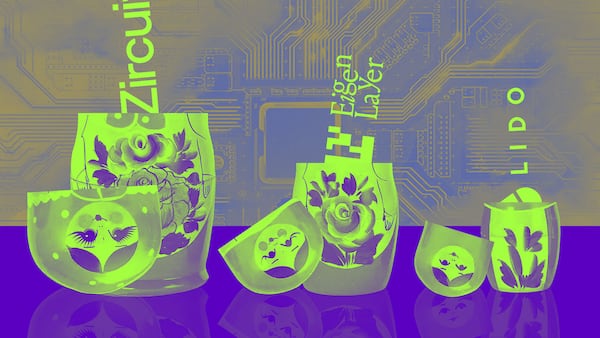- StETH is now the sixth-largest crypto by total token value, overtaking XRP by the same metric.
- The latest jump comes amid an uptick in ETH deposits on Lido and Ether’s latest rally.
Lido’s flagship liquid staking token has overtaken XRP to become the sixth-largest crypto by market capitalisation with a value of $30 billion, according to CoinGecko.
The staked Ether product is now ten times more valuable than the DeFi’s protocol’s native governance token LDO, which has a total token value of $3 billion.
That milestone has come as staked Ether deposits on Lido have climbed to about 9.8 million Ether.
Lido is a liquid staking DeFi protocol. Users who stake Ether on Lido receive stETH, which represents the amount of ETH they staked on Lido.
StETH also tracks the price of Ether, which is also enjoying a heady turn over the past few weeks, surging past $3,100 for the first time in two years.
But Ether’s price climb isn’t the only reason for this milestone, as Lido’s net deposits have experienced a significant uptick since the start of the year.
Investors are increasingly staking Ether amid the ongoing allure of potential airdrops and compounded yield opportunities in the buzzy, emerging restaking market. Lido’s stETH is one of the many deposit options, alongside RocketPool’s rETH, Coinbase’s cbETH, Swell’s swETH, for restaking on protocols like the $8 billion EigenLayer.
Indeed, Lido’s staked Ether accounts for 35% of the ETH deposits on EigenLayer, second only to natively-staked Ether, according to data from the protocol’s dashboard.
The rise of restaking
Restaking is a buzzy new extension of the $94 billion Ethereum staking market. It works like staking but with an additional step.
In staking, investors lock their Ether on the blockchain — this can be natively or via a liquid staking provider like Lido. In the latter case, they receive liquid staking tokens.
Ether tokens natively staked are locked on the blockchain until withdrawn, a process that can take time depending on the exit queue at the time of withdrawal.
With liquid staking, users receive an equivalent token of their deposit that can be reused elsewhere in the market to mint stablecoins or earn additional yield, for example.
In restaking, investors can lock their liquid staking tokens like stETH again to earn even more yield — and more risk, per JPMorgan.
Restaking could result in a “cascade of liquidations if a staked asset drops sharply in value,” wrote bank analysts.
Ethereum co-founder Vitalik Buterin has also raised concerns about the niche, indicating that complex and poorly designed models could overload the network.
Osato Avan-Nomayo is our Nigeria-based DeFi correspondent. He covers DeFi and tech. To share tips or information about stories, please contact him at osato@dlnews.com.









